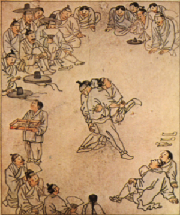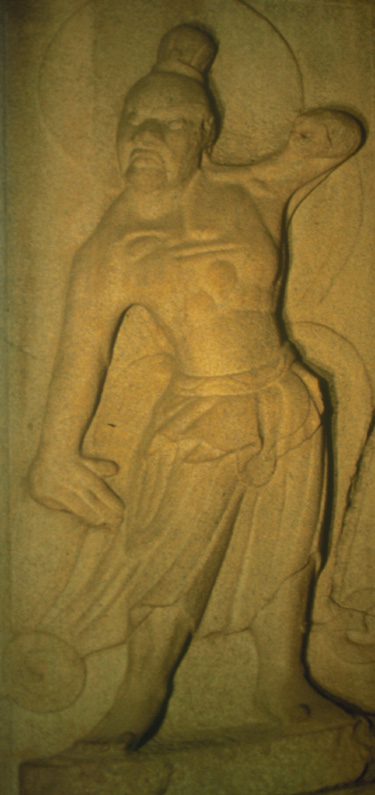|
The interest of the average Japanese martial artist in the Japanese language and Samurai culture is a good example
of how the cultural heritage is ingrained in other arts. In Taekwon-Do our
uniforms are designed in the oriental tradition, and we use many Korean commands to direct our workouts. Our patterns (teul) also show this influence in both their Korean names and their histories, which represent
various aspects of Korea and its culture. Understanding the origins of this heritage
through pattern histories establishes a traditional link between ourselves and the various individuals throughout the 5,000
years of Korean history that have contributed significantly to this art.

Many students often consider the history of patterns a simple string of words to be memorized for testing. These historical
events occurred on the other side of the world, often thousands of years ago, and seemingly have little to do with our lives
today. Delving deeper into these histories, however, is beneficial to understanding
the spirit of the Tenets of Taekwon-Do. They give us a picture of the meaning
of the Tenets of Taekwon-Do by illustrating some of history's most shining examples.
Unfortunately for students of Taekwon-Do, the records of Korean historical figures are scarce. As a nation, Korea has suffered several major invasions and has lived under the domination of foreign forces
many times. These occupations totaled hundreds of years under the rule of
governments bent on the cultural genocide of the Korean people, often including the destruction of historical records and
art. It is our great loss that the records of the greatest Hwarang heroes are
not nearly as complete as those of their Samurai neighbors with whom our society is so fascinated today.
When striving for high ideals in daily life such as those outlined in the Tenets of Taekwon-Do, we can benefit by identifying
people who are fine examples of the desired traits. It is worth taking note of
these unique individuals and using them as yardsticks of our own progress. However,
because most of us are full of character flaws, good examples of moral character are hard to come by in our society; such
exceptional individuals occur all too infrequently in the course of history. If
we do not find individuals to inspire us in today's world, the examples set by those in the history of the development of
Taekwon-Do are all the more valuable. The founders of Taekwon-Do have identified
several such individuals, or specific events that personify these characteristics in Korean history by naming the Chang-Hon
patterns after them. For the colored belt ranks, these range from Cheon-Ji to
Chung-Mu.

In examining pattern histories more closely, we note an apparent increase in the importance of each as the rank it
represents increases. Cheon-Ji, for example, is significant as a beginning, but
the legend of Dangun represents the very soul of the Korean warriors who give us our art.
Individuals such as An Chang-Ho and An Jung-Geun typify the meaning of loyalty and dedication to a cause. But, perhaps even more memorable are the contributions of Weon-Hyo, Yi-I, and
Yi-Hwang. They not only significantly redirected the mental attitude of the warriors
and general society of their day, but also had a lasting influence on philosophy and religion throughout the world, even to
this day. Finally, the Hwarang warriors, their code of honor, and the exemplary
life and deeds of Admiral Yi Sun-Sin are seen as direct examples of the martial spirit of Taekwon-Do to which we aspire. With this in mind we shall begin our discussion of the histories of the Chang-Hon
pattern set with "The Beginning", Cheon-Ji.

|
| Chinese Calligraphy for Taekwon-Do by General Choi Hong-Hi |
|

